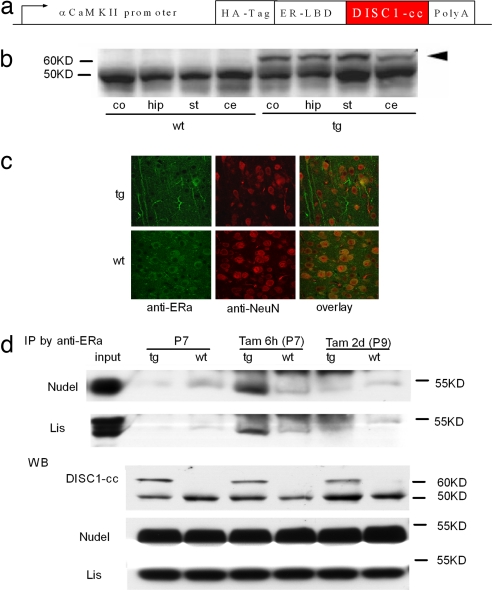Fig. 1.
Deriving the inducible DISC1-cc transgenic mouse. (a) Schematic of the inducible DISC1-cc transgene construct. αCaMKII, α-calmodulin kinase II. (b) Western blot showing the expression of the DISC1-cc protein in the cortex (co), hippocampus (hip), striatum (st), and cerebellum (ce) of transgenic (tg) and wild-type (wt) mice. The arrowhead indicates the DISC1-cc protein, and the lower bands are the endogenous estrogen receptor. (c) Immunocytochemical labeling showing the distribution of the transgene protein in cytoplasm and dendrites of hippocampal cells. Green indicates the transgene protein or endogenous estrogen receptor, and red indicates the neuronal nucleus. (d) Immunoprecipitation assay shows that DISC1-cc protein only binds with Nudel and Lis1 6 h after tamoxifen induction and not under other conditions. The Western blot (WB) shows expression level of DISC1-cc, Nudel, and Lis1 in transgenic (tg) or wild-type (wt) mice.

